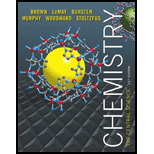
Chemistry: The Central Science (13th Edition)
13th Edition
ISBN: 9780321910417
Author: Theodore E. Brown, H. Eugene LeMay, Bruce E. Bursten, Catherine Murphy, Patrick Woodward, Matthew E. Stoltzfus
Publisher: PEARSON
expand_more
expand_more
format_list_bulleted
Concept explainers
Question
Chapter 12, Problem 15E
Interpretation Introduction
Interpretation:
The type of solid (molecular, metallic, covalent-network or ionic) of the given substance is to be stated.
Concept introduction: Solids are classified according to the type of bonding as molecular solids, ionic solids, covalent-network solids and metallic solids. There are different types of forces that exist in crystals like electrostatic forces of attraction, hydrogen bonding, and covalent bonding and so on. These forces hold the atoms in a crystal and are responsible for the properties of crystals.
To determine: The type of solid (molecular, metallic, covalent-network or ionic) of the given substance.
Expert Solution & Answer
Want to see the full answer?
Check out a sample textbook solution
Chapter 12 Solutions
Chemistry: The Central Science (13th Edition)
Ch. 12.3 - The following diagram shows the combination...Ch. 12.3 -
3.3 The following diagram represents the...Ch. 12.5 -
3.4 The following diagram represents the...Ch. 12.5 - Glycine, an amino acid used by organisms to make...Ch. 12.7 - The following diagram represents a...Ch. 12.7 -
3.7 Nitrogen (N2) and hydrogen (H2) react to form...Ch. 12.7 -
3.8 Nitrogen monoxide and oxygen react to form...Ch. 12.7 - Write "true" or "false" for each statement. a. We...Ch. 12 - Determine the empirical and molecular formulas of...Ch. 12 - a. Combustion analysis of toluene, a common...
Ch. 12 -
3.67 Automotive air bags infilate when sodium...Ch. 12 - Prob. 3ECh. 12 - Prob. 4ECh. 12 -
12.5 Which of these molecular fragments would...Ch. 12 - Prob. 6ECh. 12 - Prob. 7ECh. 12 - Prob. 8ECh. 12 - Prob. 9ECh. 12 - Prob. 10ECh. 12 - Prob. 11ECh. 12 - Prob. 12ECh. 12 - 12.13 Indicate the type of solid (molecular,...Ch. 12 - Prob. 14ECh. 12 -
12.15 A white substance melts with some...Ch. 12 -
12.16 You are given a white substance that...Ch. 12 - Prob. 17ECh. 12 - Prob. 18ECh. 12 - Prob. 19ECh. 12 - Prob. 20ECh. 12 - Prob. 21ECh. 12 - Prob. 22ECh. 12 - Prob. 23ECh. 12 - Prob. 24ECh. 12 - Prob. 25ECh. 12 - Prob. 26ECh. 12 - Prob. 27ECh. 12 - Prob. 28ECh. 12 - Prob. 29ECh. 12 - Prob. 30ECh. 12 - Prob. 31ECh. 12 - Prob. 32ECh. 12 - Prob. 33ECh. 12 - Prob. 34ECh. 12 - Prob. 35ECh. 12 - Prob. 36ECh. 12 - Prob. 37ECh. 12 - Prob. 38ECh. 12 - Prob. 39ECh. 12 - Prob. 40ECh. 12 - Prob. 41ECh. 12 - Prob. 42ECh. 12 - Prob. 43ECh. 12 - Prob. 44ECh. 12 - Prob. 45ECh. 12 - Prob. 46ECh. 12 - Prob. 47ECh. 12 - Prob. 48ECh. 12 -
12.49 Which would you expect to be the more...Ch. 12 - Prob. 50ECh. 12 - Prob. 51ECh. 12 - Prob. 52ECh. 12 - Prob. 53ECh. 12 - Prob. 54ECh. 12 - Prob. 55ECh. 12 - Clausthalite is a mineral composed of lead...Ch. 12 - Prob. 57ECh. 12 - Prob. 58ECh. 12 - Prob. 59ECh. 12 - Prob. 60ECh. 12 - Prob. 61ECh. 12 - Prob. 62ECh. 12 - Prob. 63ECh. 12 - Prob. 64ECh. 12 - Prob. 65ECh. 12 - Prob. 66ECh. 12 - Prob. 67ECh. 12 - Prob. 68ECh. 12 - Prob. 69ECh. 12 - Prob. 70ECh. 12 - Prob. 71ECh. 12 - Prob. 72ECh. 12 - Prob. 73ECh. 12 - Prob. 74ECh. 12 - Prob. 75ECh. 12 - Prob. 76ECh. 12 - Prob. 77ECh. 12 - Prob. 78ECh. 12 - Prob. 79ECh. 12 - Prob. 80ECh. 12 - Prob. 81ECh. 12 - Prob. 82ECh. 12 - Prob. 83ECh. 12 - Prob. 84ECh. 12 - Prob. 85ECh. 12 - Prob. 86ECh. 12 - Prob. 87ECh. 12 - Prob. 88ECh. 12 - Prob. 89ECh. 12 - Prob. 90ECh. 12 - Prob. 91ECh. 12 - Prob. 92ECh. 12 - Prob. 93ECh. 12 - Prob. 94ECh. 12 - Prob. 95ECh. 12 - Prob. 96ECh. 12 - Prob. 97ECh. 12 - Prob. 98ECh. 12 - Prob. 99AECh. 12 - Prob. 100AECh. 12 - Prob. 101AECh. 12 - Prob. 102AECh. 12 - Prob. 103AECh. 12 - What type of lattice—primitive cubic body-centered...Ch. 12 - Prob. 105AECh. 12 - Prob. 106AECh. 12 - Prob. 107AECh. 12 - Prob. 108AECh. 12 - Prob. 109AECh. 12 - Prob. 110AECh. 12 - Prob. 111AECh. 12 - Prob. 112AECh. 12 - Prob. 113AECh. 12 - 12.114 Germanium has the same structure as...Ch. 12 - Prob. 115AECh. 12 - Prob. 116AECh. 12 - The karat scale used to describe gold alloys is...Ch. 12 - Prob. 118IECh. 12 - Prob. 119IECh. 12 - Prob. 120IECh. 12 - Prob. 121IECh. 12 - Prob. 122IECh. 12 - Prob. 123IECh. 12 - Prob. 124IECh. 12 - Prob. 125IE
Knowledge Booster
Learn more about
Need a deep-dive on the concept behind this application? Look no further. Learn more about this topic, chemistry and related others by exploring similar questions and additional content below.Recommended textbooks for you
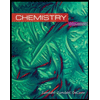 ChemistryChemistryISBN:9781305957404Author:Steven S. Zumdahl, Susan A. Zumdahl, Donald J. DeCostePublisher:Cengage Learning
ChemistryChemistryISBN:9781305957404Author:Steven S. Zumdahl, Susan A. Zumdahl, Donald J. DeCostePublisher:Cengage Learning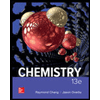 ChemistryChemistryISBN:9781259911156Author:Raymond Chang Dr., Jason Overby ProfessorPublisher:McGraw-Hill Education
ChemistryChemistryISBN:9781259911156Author:Raymond Chang Dr., Jason Overby ProfessorPublisher:McGraw-Hill Education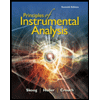 Principles of Instrumental AnalysisChemistryISBN:9781305577213Author:Douglas A. Skoog, F. James Holler, Stanley R. CrouchPublisher:Cengage Learning
Principles of Instrumental AnalysisChemistryISBN:9781305577213Author:Douglas A. Skoog, F. James Holler, Stanley R. CrouchPublisher:Cengage Learning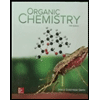 Organic ChemistryChemistryISBN:9780078021558Author:Janice Gorzynski Smith Dr.Publisher:McGraw-Hill Education
Organic ChemistryChemistryISBN:9780078021558Author:Janice Gorzynski Smith Dr.Publisher:McGraw-Hill Education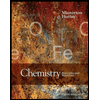 Chemistry: Principles and ReactionsChemistryISBN:9781305079373Author:William L. Masterton, Cecile N. HurleyPublisher:Cengage Learning
Chemistry: Principles and ReactionsChemistryISBN:9781305079373Author:William L. Masterton, Cecile N. HurleyPublisher:Cengage Learning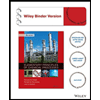 Elementary Principles of Chemical Processes, Bind...ChemistryISBN:9781118431221Author:Richard M. Felder, Ronald W. Rousseau, Lisa G. BullardPublisher:WILEY
Elementary Principles of Chemical Processes, Bind...ChemistryISBN:9781118431221Author:Richard M. Felder, Ronald W. Rousseau, Lisa G. BullardPublisher:WILEY

Chemistry
Chemistry
ISBN:9781305957404
Author:Steven S. Zumdahl, Susan A. Zumdahl, Donald J. DeCoste
Publisher:Cengage Learning

Chemistry
Chemistry
ISBN:9781259911156
Author:Raymond Chang Dr., Jason Overby Professor
Publisher:McGraw-Hill Education

Principles of Instrumental Analysis
Chemistry
ISBN:9781305577213
Author:Douglas A. Skoog, F. James Holler, Stanley R. Crouch
Publisher:Cengage Learning

Organic Chemistry
Chemistry
ISBN:9780078021558
Author:Janice Gorzynski Smith Dr.
Publisher:McGraw-Hill Education

Chemistry: Principles and Reactions
Chemistry
ISBN:9781305079373
Author:William L. Masterton, Cecile N. Hurley
Publisher:Cengage Learning

Elementary Principles of Chemical Processes, Bind...
Chemistry
ISBN:9781118431221
Author:Richard M. Felder, Ronald W. Rousseau, Lisa G. Bullard
Publisher:WILEY
Unit Cell Chemistry Simple Cubic, Body Centered Cubic, Face Centered Cubic Crystal Lattice Structu; Author: The Organic Chemistry Tutor;https://www.youtube.com/watch?v=HCWwRh5CXYU;License: Standard YouTube License, CC-BY